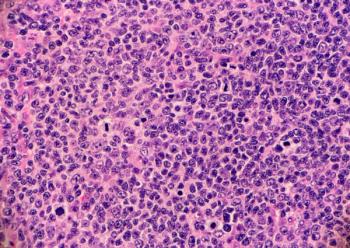
Eli Lilly’s Oral GLP-1, Orforglipron, Demonstrates Efficacy and Safety Consistent with Injectable GLP-1s in Phase III Trial
In addition to meeting the primary endpoint of superior A1C reduction, the once-daily oral pill reduced weight by an average of 16 lbs.
Eli Lilly has shared positive Phase III clinical trial data of its investigational, oral glucagon-like peptide-1 (GLP-1), orforglipron in adults with type 2 diabetes and inadequate glycemic control with diet and exercise alone. In the ACHIEVE-1 study evaluating orforglipron compared to placebo, the oral GLP-1 lowered A1C by an average of 1.3% to 1.6% across doses and reduced weight by an average 16 lbs. (7.9%) at the highest dose.1
These encouraging outcomes from ACHIEVE-1 were achieved at the 40-week mark. The trial met its primary endpoint of superior A1C reduction compared to placebo. In addition to the reduction in weight observed, another key secondary endpoint was met with 65% of participants taking the highest dose of orforglipron achieving an A1C less than or equal to 6.5%, which falls below the American Diabetes Association's (ADA) defined threshold for diabetes.
In a press release, David A. Ricks, Lilly chair and CEO, said: "ACHIEVE-1 is the first of seven Phase III studies examining the safety and efficacy of orforglipron across people with diabetes and obesity. We are pleased to see that our latest incretin medicine meets our expectations for safety and tolerability, glucose control and weight loss, and we look forward to additional data readouts later this year. As a convenient once-daily pill, orforglipron may provide a new option and, if approved, could be readily manufactured and launched at scale for use by people around the world."
The safety profile of orforglipron in ACHIEVE-1 was consistent with the established GLP-1 class. The most common adverse events for participants treated with the investigational therapy were diarrhea, nausea, dyspepsia, constipation, and vomiting.
The ACHIEVE-1 trial (NCT05971940) is a 40-week, randomized, double-blind, placebo-controlled study evaluating orforglipron at doses of 3 mg, 12 mg, and 36 mg as monotherapy. Across the US, China, India, Japan, and Mexico, the trial randomized 559 participants with the objective of demonstrating that orforglipron is superior in A1C reduction from baseline after 40 weeks, compared to placebo, in patients with type 2 diabetes who have not taken any anti-diabetic medications for at least 90 days prior to their first visit, and are naïve to insulin therapy.
Lilly’s Phase III ACHIEVE program has enrolled over 6,000 people with type 2 diabetes across five global registrational trials. The program started in 2023 and is expected to continue into 2026 with more results on the way.
Orforglipron was discovered by Chugai Pharmaceutical Co., Ltd. and licensed by Lilly in 2018. In addition to its exploration in weight management, the oral GLP-1 is being studied as a potential treatment for obstructive sleep apnea and hypertension in adults with obesity.
Reference
1. Lilly's oral GLP-1, orforglipron, demonstrated statistically significant efficacy results and a safety profile consistent with injectable GLP-1 medicines in successful Phase 3 trial. News release. Eli Lilly. April 17, 2025. Accessed April 17, 2025.
Newsletter
Stay current in clinical research with Applied Clinical Trials, providing expert insights, regulatory updates, and practical strategies for successful clinical trial design and execution.




